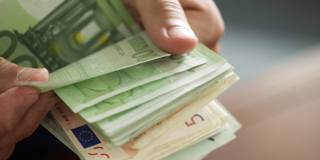What European households do with the cash buffers they have built up during the pandemic could have good, bad, or ugly consequences. The best option is for policymakers to help channel these savings into long-term investments that support the continent’s green and digital transformations.
MUNICH – The COVID-19 pandemic is a crisis like no other. In 2020, it plunged the global economy into its deepest recession since World War II. But, after a year in the doldrums, Europe’s private firms and households are now awash with cash. How households in particular use their accumulated savings will be crucial in shaping the continent’s post-pandemic recovery.
Whereas companies have built their cash buffers on piles of new debt, households remained prudent during the pandemic: Their debt barely increased, and debt leverage remained essentially flat. Households’ cash buffers – or excess savings, as they are often called – stem from reduced spending, mainly on services. All those canceled restaurant meals, holiday trips, and concerts swelled European household savings by €450 billion ($534 billion) in 2020 alone. And renewed lockdowns in the first half of this year could add another €200 billion to the total in 2021.
True, Europe will experience an economic rebound this year regardless of what happens to the excess savings. But how households deploy them will help to determine whether the recovery merely marks a return to the pre-crisis growth path, with all its social dislocations and political blowback, or instead ushers in a new era of inclusive and sustainable prosperity.

MUNICH – The COVID-19 pandemic is a crisis like no other. In 2020, it plunged the global economy into its deepest recession since World War II. But, after a year in the doldrums, Europe’s private firms and households are now awash with cash. How households in particular use their accumulated savings will be crucial in shaping the continent’s post-pandemic recovery.
Whereas companies have built their cash buffers on piles of new debt, households remained prudent during the pandemic: Their debt barely increased, and debt leverage remained essentially flat. Households’ cash buffers – or excess savings, as they are often called – stem from reduced spending, mainly on services. All those canceled restaurant meals, holiday trips, and concerts swelled European household savings by €450 billion ($534 billion) in 2020 alone. And renewed lockdowns in the first half of this year could add another €200 billion to the total in 2021.
True, Europe will experience an economic rebound this year regardless of what happens to the excess savings. But how households deploy them will help to determine whether the recovery merely marks a return to the pre-crisis growth path, with all its social dislocations and political blowback, or instead ushers in a new era of inclusive and sustainable prosperity.